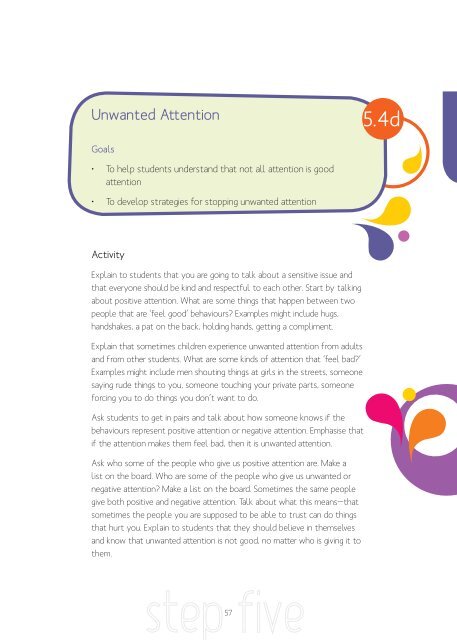Step 5 - Raising Voices
Step 5 - Raising Voices
Step 5 - Raising Voices
- No tags were found...
Create successful ePaper yourself
Turn your PDF publications into a flip-book with our unique Google optimized e-Paper software.
Unwanted Attention5.4dGoals• To help students understand that not all attention is goodattention• To develop strategies for stopping unwanted attentionActivityExplain to students that you are going to talk about a sensitive issue andthat everyone should be kind and respectful to each other. Start by talkingabout positive attention. What are some things that happen between twopeople that are ‘feel good’ behaviours? Examples might include hugs,handshakes, a pat on the back, holding hands, getting a compliment.Explain that sometimes children experience unwanted attention from adultsand from other students. What are some kinds of attention that ‘feel bad?’Examples might include men shouting things at girls in the streets, someonesaying rude things to you, someone touching your private parts, someoneforcing you to do things you don’t want to do.Ask students to get in pairs and talk about how someone knows if thebehaviours represent positive attention or negative attention. Emphasise thatif the attention makes them feel bad, then it is unwanted attention.Ask who some of the people who give us positive attention are. Make alist on the board. Who are some of the people who give us unwanted ornegative attention? Make a list on the board. Sometimes the same peoplegive both positive and negative attention. Talk about what this means—thatsometimes the people you are supposed to be able to trust can do thingsthat hurt you. Explain to students that they should believe in themselvesand know that unwanted attention is not good, no matter who is giving it tothem.57
















